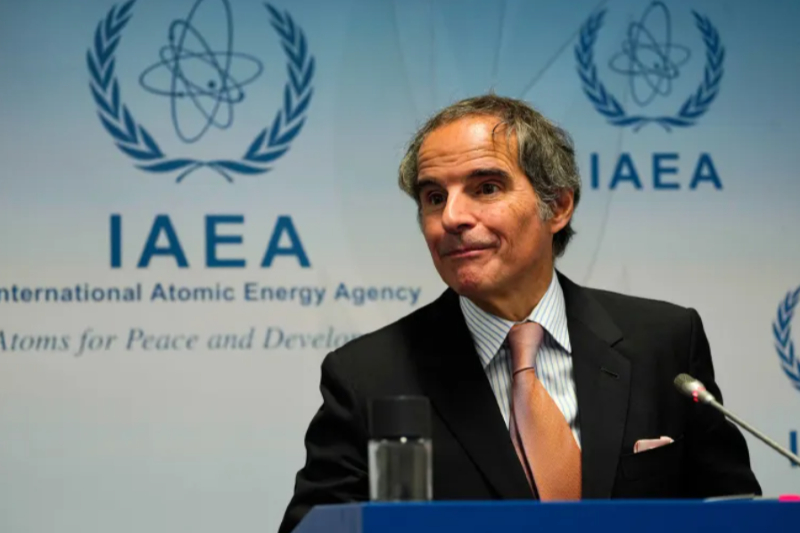
The United Nations' nuclear watchdog has raised serious concerns over Iran’s continued expansion of its highly enriched uranium reserves, revealing a sharp increase that brings the country closer to the threshold of developing nuclear weapons.
According to a confidential report obtained by the BBC, the International Atomic Energy Agency (IAEA) disclosed that Iran now holds more than 400 kilograms of uranium enriched to 60% purity.
This is nearly 50% more than what was reported three months ago and far exceeds the level required for civilian energy use.
If further enriched, this quantity could potentially yield material for approximately ten nuclear weapons, making Iran the only non-nuclear-armed nation producing uranium at such a high level.
Iran has consistently asserted that its nuclear programme is for peaceful purposes. However, the IAEA stated it is currently unable to confirm whether this claim still holds true.
The report notes that Iran has enriched uranium at a rate sufficient to produce the equivalent of one nuclear weapon per month over the past quarter—during ongoing negotiations between Tehran and Washington over the future of Iran’s nuclear activities.
“The substantially increased production and stockpiling of highly enriched uranium by Iran is deeply troubling,” said Rafael Grossi, Director General of the IAEA.
This development is expected to intensify pressure from Western powers—specifically the United States, United Kingdom, France, and Germany—who may now push for Iran to be found in breach of its commitments under the nuclear non-proliferation treaty.
Following the release of the report, Israel accused Iran of pursuing nuclear weapons.
A statement from Israeli Prime Minister Benjamin Netanyahu’s office said: “Such enrichment levels are only found in countries actively seeking nuclear weapons, and they have no peaceful purpose.”
In response, Iranian Foreign Minister Abbas Araghchi reiterated Tehran’s opposition to nuclear arms.
“If this is about nuclear weapons, we too find such weapons unacceptable,” he stated during a televised address, emphasizing that Iran’s policy remains against developing such weapons.
U.S. officials, meanwhile, estimate that Iran could produce weapons-grade uranium in less than two weeks if it chose to do so, and possibly assemble a bomb within a few months.
The IAEA’s latest report is notably more detailed than previous assessments, and includes findings on Iran’s undeclared nuclear activities prior to 2003.
The agency revealed that Iran carried out nuclear-related work at three undisclosed locations: Lavisan-Shian, Varamin, and Turquzabad.
Despite ongoing diplomatic talks aimed at reviving a nuclear deal, the report indicates that Iran has not slowed its uranium enrichment.
The negotiations, which began in April, remain stalled over key disagreements—particularly whether Iran will be permitted to continue any level of enrichment under a renewed agreement.
While Tehran maintains that its nuclear efforts are peaceful, the IAEA said it “cannot verify” this due to Iran’s lack of cooperation, including its refusal to allow access to top inspectors and its failure to resolve long-standing questions about its past nuclear activities.
Recent statements by two senior advisors to Iran’s Supreme Leader Ayatollah Ali Khamenei—Ali Larijani and Kamal Kharazi—have further fueled concern.
Both suggested that if international pressure mounts, Iran might reconsider its stance against nuclear weapons, a shift that has alarmed Western diplomats.
The IAEA board is expected to convene in the coming days to discuss potential actions, with a possible referral of Iran to the UN Security Council on the table—though that move may occur at a future session.



